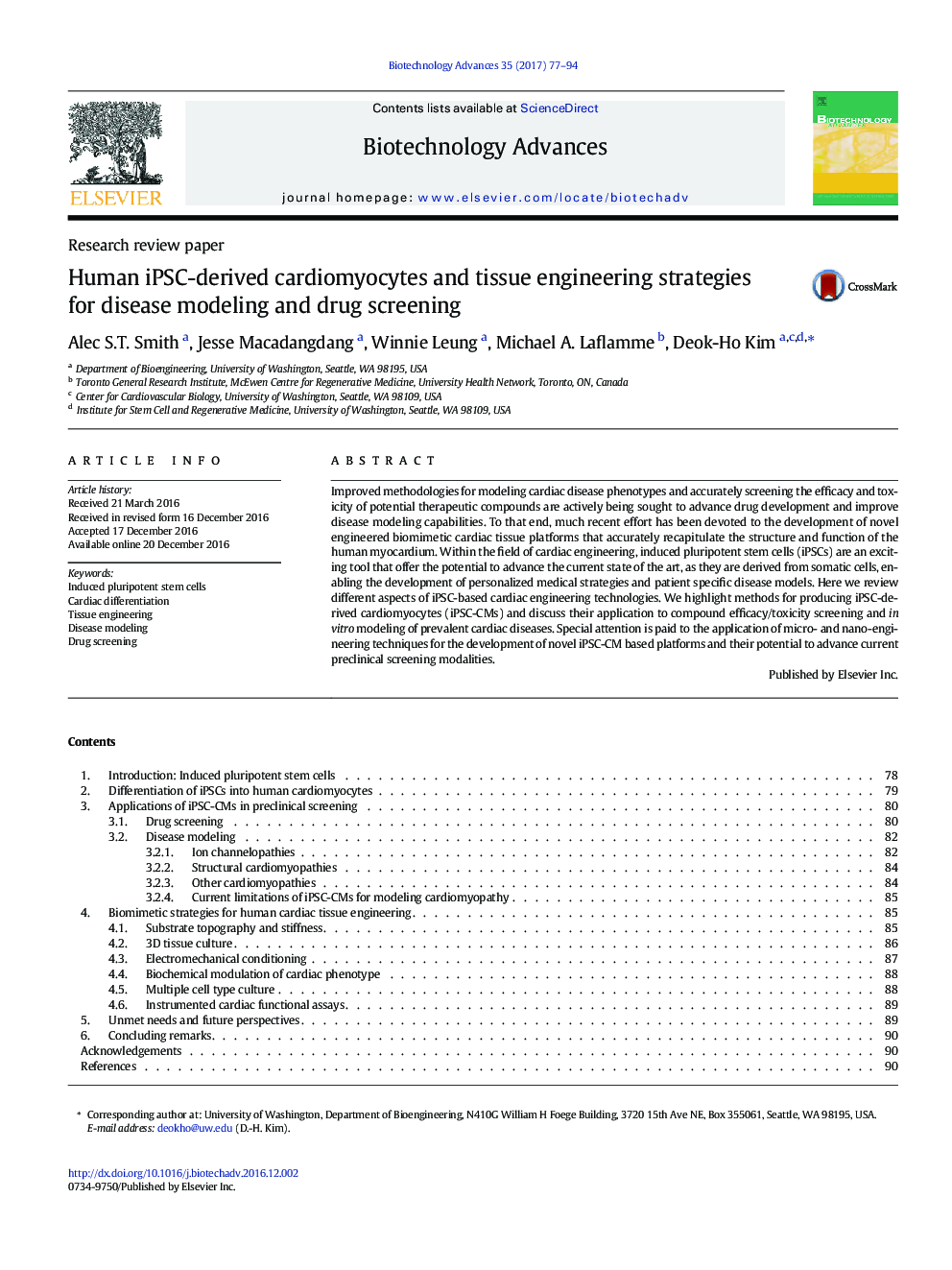| Article ID | Journal | Published Year | Pages | File Type |
|---|---|---|---|---|
| 6451186 | Biotechnology Advances | 2017 | 18 Pages |
Improved methodologies for modeling cardiac disease phenotypes and accurately screening the efficacy and toxicity of potential therapeutic compounds are actively being sought to advance drug development and improve disease modeling capabilities. To that end, much recent effort has been devoted to the development of novel engineered biomimetic cardiac tissue platforms that accurately recapitulate the structure and function of the human myocardium. Within the field of cardiac engineering, induced pluripotent stem cells (iPSCs) are an exciting tool that offer the potential to advance the current state of the art, as they are derived from somatic cells, enabling the development of personalized medical strategies and patient specific disease models. Here we review different aspects of iPSC-based cardiac engineering technologies. We highlight methods for producing iPSC-derived cardiomyocytes (iPSC-CMs) and discuss their application to compound efficacy/toxicity screening and in vitro modeling of prevalent cardiac diseases. Special attention is paid to the application of micro- and nano-engineering techniques for the development of novel iPSC-CM based platforms and their potential to advance current preclinical screening modalities.
